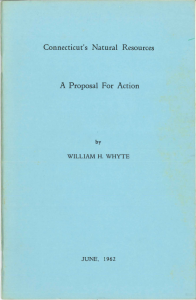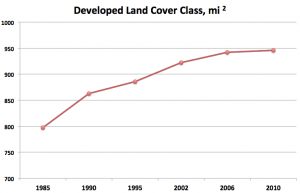“Now is the time for Connecticut to move swiftly to save our dwindling open spaces and our great heritage of natural resources for the use and enjoyment of future generations.”

Thus began a letter from the Governor of Connecticut ordering the preparation of a plan of action for statewide conservation. The Governor was John Dempsey, and the date was February 21, 1962. For those keeping score at home, that was over 50 years ago(!) The end result was a report simply entitled “Connecticut’s Natural Resources: A Proposal for Action.” In conservation circles it is more often referred to as the “Whyte Report,” after its author, William H. Whyte, a popular author and journalist specializing (fascinatingly enough) in human interactions in urban spaces.

The Whyte Report may be 52 years old, but in its identification of the threats to our state’s natural resources, and in many of the solutions it offers, it could’ve been written yesterday. The report calls for land use planning, citing the burst of economic activity in the late 1950’s and early 1960’s and identifying not only the amount, but the pattern, of land use development as the major threats. CLEAR’s remote sensing-based land cover study, Connecticut’s Changing Landscape, shows a similar rapid increase in developed land in the late 1980’s/early 1990’s — again apparently correlated with a robust economy.
Are we poised for another burst of development as the economy recovers? Maybe. And if so, do we have the policies and plans in place to ensure that the development has minimal effect on our natural resources? Definitely not. This is why a growing coalition of conservation organizations are calling for a “Whyte II” report, reassessing the state of Connecticut’s landscape and outlining a plan of action.
In Whyte’s words, “the program should be bold, it should be simple, and it should reinforce the tradition of local initiative.” Amen. That’s what we’re shooting for. Whyte’s report ultimately resulted in the creation of Public Act 490, which created a tax break for owners of forest, farmland and other open space and has contributed greatly to conservation over the past decades (see CT Farm Bureau’s excellent publication on PA 490 here). A similarly forceful impact is needed this time around. Whyte also called for $50 million in investment. I’m not sure how much he ultimately got, but that’s $389 million in today’s dollars. That could go a long way. Stay tuned…